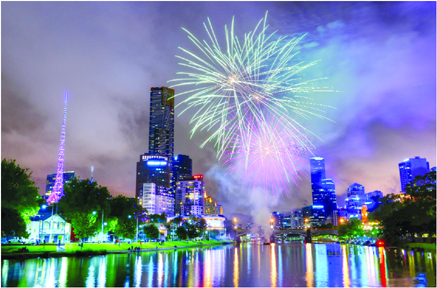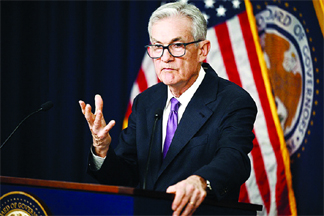
Other than India, Diwali is also celebrated in other parts of the world where Hindus are in prominent numbers. In many countries like Malaysia, Nepal, Singapore, and Sri Lanka, Diwali is an official holiday. These countries celebrate the festival with almost as much enthusiasm as India. Millions of people have flocked to witness firework displays to mark the start of Diwali. Depending on the location, celebrations may include millions of lights in houses, fireworks, gift-giving and spiritual rituals, feasts and more. This year will be different, of course, with more focus on maintaining social distancing and staying indoors.
Here are some countries which celebrate Diwali with as much enthusiasm as Indians do with a little difference in their celebrations.
Singapore
Recognised as Deepavali, the festival is a state holiday in Singapore. With a notable Hindu community, the zeal in Little India is similar to that in any city in India.
The streets are transformed by multi-coloured flowers, buntings and lights. Storefronts are decorated in shades of red and gold, and the sweet fragrance of flowers and incense fills the air. People are decked in their fineries as prayers are held to praise the divine.
Mauritius
Mauritius is an isle in the Indian Ocean which is to the east of Madagascar. This gorgeous landmass is abundant with scenic landscapes and enchanting places. Mauritius estimates 63% of Indian majority, of which 80% follow Hinduism. Therefore, the observance of almost all the Hindu festivals on this island is a tradition.
In Mauritius, Diwali celebration is an age-old custom. It holds unique importance for the inhabitants. They believe that Diwali has been celebrated long before the coming of Lord Rama from 14 years of exile and his crowning as the king. The festival is regarded by the lighting of earthen lamps in lines, creating pictures out of the lines. Lakshmi is revered as the goddess of wealth and firecrackers are burnt to frighten away evil spirits.
Malaysia
Fascinating in its heterogeneity, Malaysia has several mesmerising beauties and attractions. With a population of approximately 20 million, including a harmonious multi-ethnic mix of Malays, Malaysia ensures a vibrant blend of cultural beliefs. The Hindu inhabitants of Malaysia form about eight percent of its entire population.
The Malaysian people recognise Diwali as Hari Diwali. This festival is observed during the seventh month of the Hindu solar calendar. The South Indian ritual of oil bath precedes the celebrations. The festival involves visits to temples and prayers at home altars. Little lamps moulded from clay and filled with coconut oil and wicks are a familiar sight.
USA
Asians rank amongst one of the biggest immigrant population in the USA of which, Indians are a large number. Most cities have a big Indian community and Diwali is a holiday celebrated with a lot of excitement. Be it New Jersey, Illinois, Texas or California, temples across hold a Diwali night that marks priests offering common prayers. After this a vegetarian communal feast is held.
Larger cities also arrange a Diwali parade in some parts. Like anywhere else in the world, friends and family meet at each other’s homes and give presents as part of the Diwali festivities.
Australia
With a significant number of Indians in Australia, cities like Sydney and Melbourne observe Diwali celebrated within various pockets of the community. Most notably, Diwali at Federation Square in Melbourne has risen to become the biggest celebration in Australia.
Marked with a grand exhibition of fireworks, live performance like traditional dances of India along with art and other cultural shows, Diwali is enjoyed by all.
Nepal
Nepal is a landlocked nation nestled in the foothills of the Himalayas. It is a multi-ethnic and multi-lingual community which is the only Hindu Kingdom of the world. Diwali is commemorated here with the typical Hindu festivities and customs. Diwali in Nepal is identified as Tihar. Just like most regions in India, Diwali is celebrated here to honour the goddess of fortune and god of prosperity, Lakshmi and Ganesh respectively. The festival of light comes in October or November on the day of Amavasya – the darkest day of the year.
The festival here lasts for five days. Every day has its unique importance. The first day is devoted to cows as they prepare rice and feed the cattle believing that goddess Lakshmi appears on cows. The second day is for Dogs as the Vahana of Bhairava. Arrangement of tasty food mainly meant for the dog is a common feature of the day. Lights and lamps are lit to radiate the entire surroundings, and some of the speciality items are cooked to mark the third day of the festival. Fireworks, lamps and crackers are extensively used. The fourth day is devoted to Yama, the Hindu God of Death. He is prayed for long life. The fifth and final day is Bhaiya Dhooj dedicated to the brothers who are wished long life and prosperity by their sisters.
Leicester
Bright lights, fireworks and chaotic-celebrations – it can only be Diwali. Millions of Hindus, Jains and Sikhs in India and across the world have been marking the annual five-day festival of light this week with traditional prayers, fireworks and a huge amount of feasting. The festival, which coincides with Hindu New Year, involves lighting traditional earthen diyas (candles), decorating houses with colourful rangoli (floor patterns created with coloured rice or powder), and wearing new clothes, often gifts from relatives. Each faith has its own reasons for celebrating Diwali, but the main theme which runs throughout the festival is the triumph of good over evil and light over darkness, shown with huge fireworks displays and by decorating houses with candles and long strings of lights. In India, traditional holiday traffic saw cities across the country draw to a standstill as firecrackers burst overhead, shops buzzed with customers buying gold – Diwali is an auspicious time for new purchases – and children letting off firecrackers in the streets. Sweets are a major part of the festival, and Indian shop windows have been filled with towering arrays of neon-coloured hand-made Diwali specialties such as sutarfeni (sweet shredded dough topped with pistachio nuts). More than 35,000 people attended a Diwali parade on the streets of Leicester city centre October end, an area which is known for some of the largest Diwali festivities outside of India.





Be the first to comment